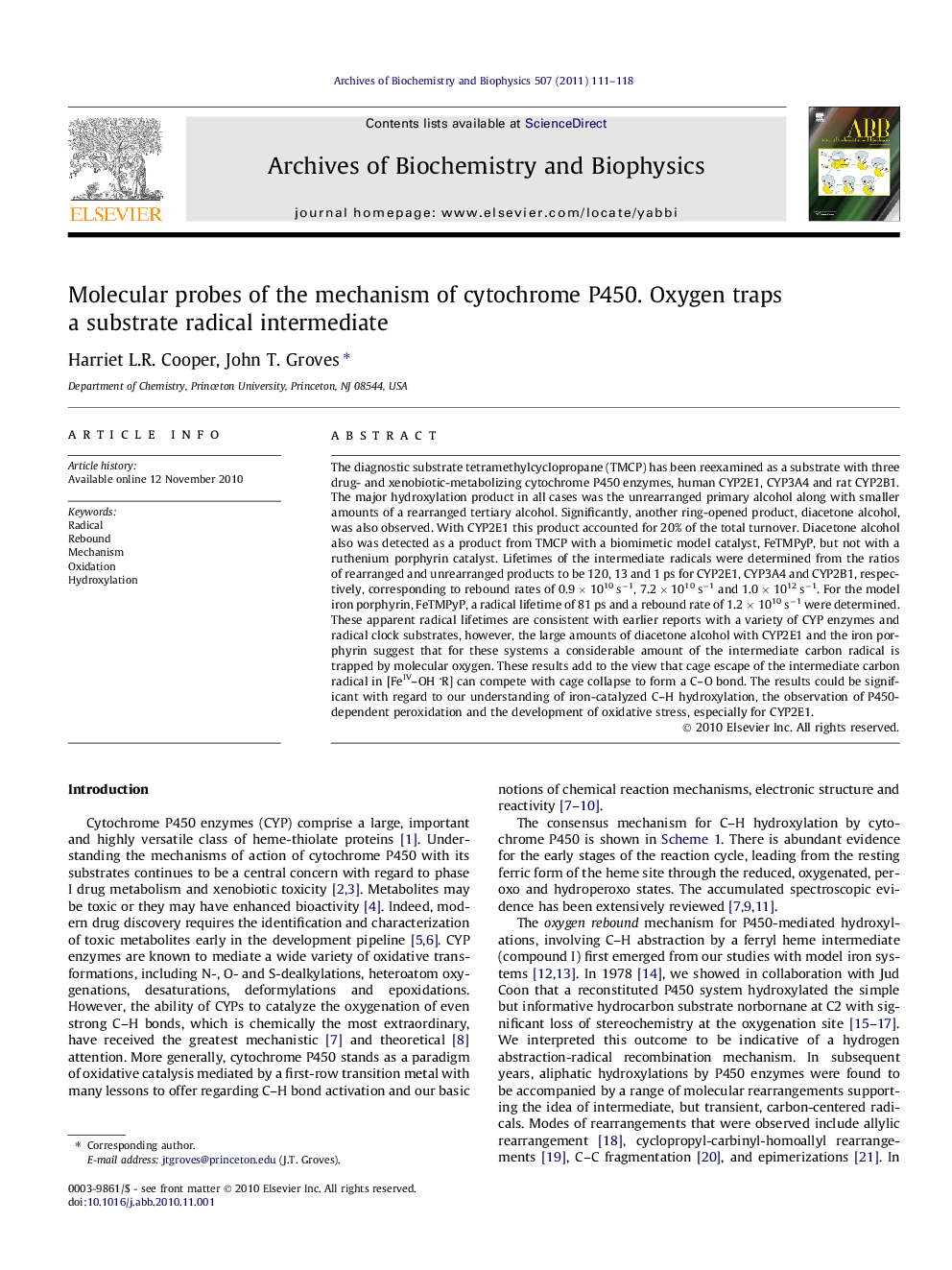| Article ID | Journal | Published Year | Pages | File Type |
|---|---|---|---|---|
| 1925816 | Archives of Biochemistry and Biophysics | 2011 | 8 Pages |
The diagnostic substrate tetramethylcyclopropane (TMCP) has been reexamined as a substrate with three drug- and xenobiotic-metabolizing cytochrome P450 enzymes, human CYP2E1, CYP3A4 and rat CYP2B1. The major hydroxylation product in all cases was the unrearranged primary alcohol along with smaller amounts of a rearranged tertiary alcohol. Significantly, another ring-opened product, diacetone alcohol, was also observed. With CYP2E1 this product accounted for 20% of the total turnover. Diacetone alcohol also was detected as a product from TMCP with a biomimetic model catalyst, FeTMPyP, but not with a ruthenium porphyrin catalyst. Lifetimes of the intermediate radicals were determined from the ratios of rearranged and unrearranged products to be 120, 13 and 1 ps for CYP2E1, CYP3A4 and CYP2B1, respectively, corresponding to rebound rates of 0.9 × 1010 s−1, 7.2 × 1010 s−1 and 1.0 × 1012 s−1. For the model iron porphyrin, FeTMPyP, a radical lifetime of 81 ps and a rebound rate of 1.2 × 1010 s−1 were determined. These apparent radical lifetimes are consistent with earlier reports with a variety of CYP enzymes and radical clock substrates, however, the large amounts of diacetone alcohol with CYP2E1 and the iron porphyrin suggest that for these systems a considerable amount of the intermediate carbon radical is trapped by molecular oxygen. These results add to the view that cage escape of the intermediate carbon radical in [FeIV–OH R] can compete with cage collapse to form a C–O bond. The results could be significant with regard to our understanding of iron-catalyzed C–H hydroxylation, the observation of P450-dependent peroxidation and the development of oxidative stress, especially for CYP2E1.
Graphical abstractFigure optionsDownload full-size imageDownload high-quality image (118 K)Download as PowerPoint slideResearch highlights► Tetramethylcyclopropane reveals a range of radical lifetimes for three CYP enzymes. ► A model iron porphyrin/Ar–IO system gave similar results. ► Diacetone alcohol is a significant product for CYP2E1 and the model system.
